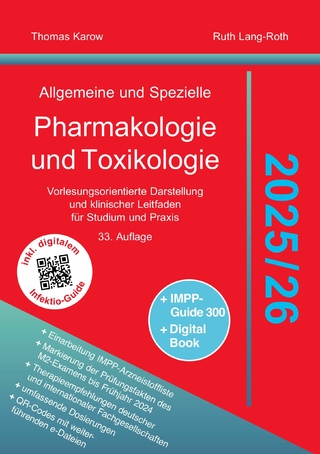
Handbook of Neurotoxicology
Humana Press Inc. (Verlag)
978-0-89603-796-0 (ISBN)
1 Developmental Neurotoxicology: Testing and Interpretation.- 2 Manifestations of CNS Insult During Development.- 3 Developmental Neurotoxicity: What Have We Learnedfrom Guideline Studies?.- 4 Risk Assessment of Developmental Neurotoxicants.- 5 Electrophysiologic Evidence of Neural Injury or Adaptation in Cocaine Dependence.- 6 Addictive Basis of Marijuana and Cannabinoids.- 7 Dopamine and Its Modulation of Drug-Induced Neuronal Damage.- 8 NMDA Antagonist-Induced Neurotoxicity and Psychosis: The Dissociative Stimulation Hypothesis.- 9 Emerging Drugs of Abuse: Use Patterns and Clinical Toxicity.- 10 Mechanisms of Methamphetamine-Induced Neurotoxicity.- 11 Neurotoxic Effects of Substituted Amphetamines in Rats and Mice: Challenges to the Current Dogma.- 12 Studies of Neural Degeneration Indicate that Fasciculus Retroflexus Is a Weak Link in Brain for Many Drugs of Abuse.- 13 Microsensors Detect Neuroadaptation by Cocaine: Serotonin Released in Motor Basal Ganglia Is Not Rhythmicwith Movement.- 14 Impact of Intoxication: Structural and Functional Modificationsin the Brain Induced by Ethanol Exposure.- 15 Structural and Functional Neuroimaging of the Effects of Opioids.- 16 Structural and Functional Neuroimaging of the Effects of Cocaine in Human and Nonhuman Primates.- 17 Functional Neuroimaging of Cannabinoid Effects.- 18 Neuroimaging of MDMA-Induced Neurotoxicity.- 19 Tier 1 Neurological Assessment in Regulated Animal Safety Studies.- 20 Neurological Assessment: The Role of the Clinicianin Clinical Neurotoxicology.- 21 Human Neuropsychological Testing and Evaluation.
| Erscheint lt. Verlag | 20.3.2002 |
|---|---|
| Zusatzinfo | 11 Illustrations, color; 21 Illustrations, black and white; XVI, 594 p. 32 illus., 11 illus. in color. |
| Verlagsort | Totowa, NJ |
| Sprache | englisch |
| Maße | 178 x 254 mm |
| Themenwelt | Medizin / Pharmazie ► Medizinische Fachgebiete ► Neurologie |
| Medizin / Pharmazie ► Medizinische Fachgebiete ► Pharmakologie / Pharmakotherapie | |
| Medizin / Pharmazie ► Pharmazie | |
| Studium ► 2. Studienabschnitt (Klinik) ► Pharmakologie / Toxikologie | |
| ISBN-10 | 0-89603-796-7 / 0896037967 |
| ISBN-13 | 978-0-89603-796-0 / 9780896037960 |
| Zustand | Neuware |
| Haben Sie eine Frage zum Produkt? |
aus dem Bereich


